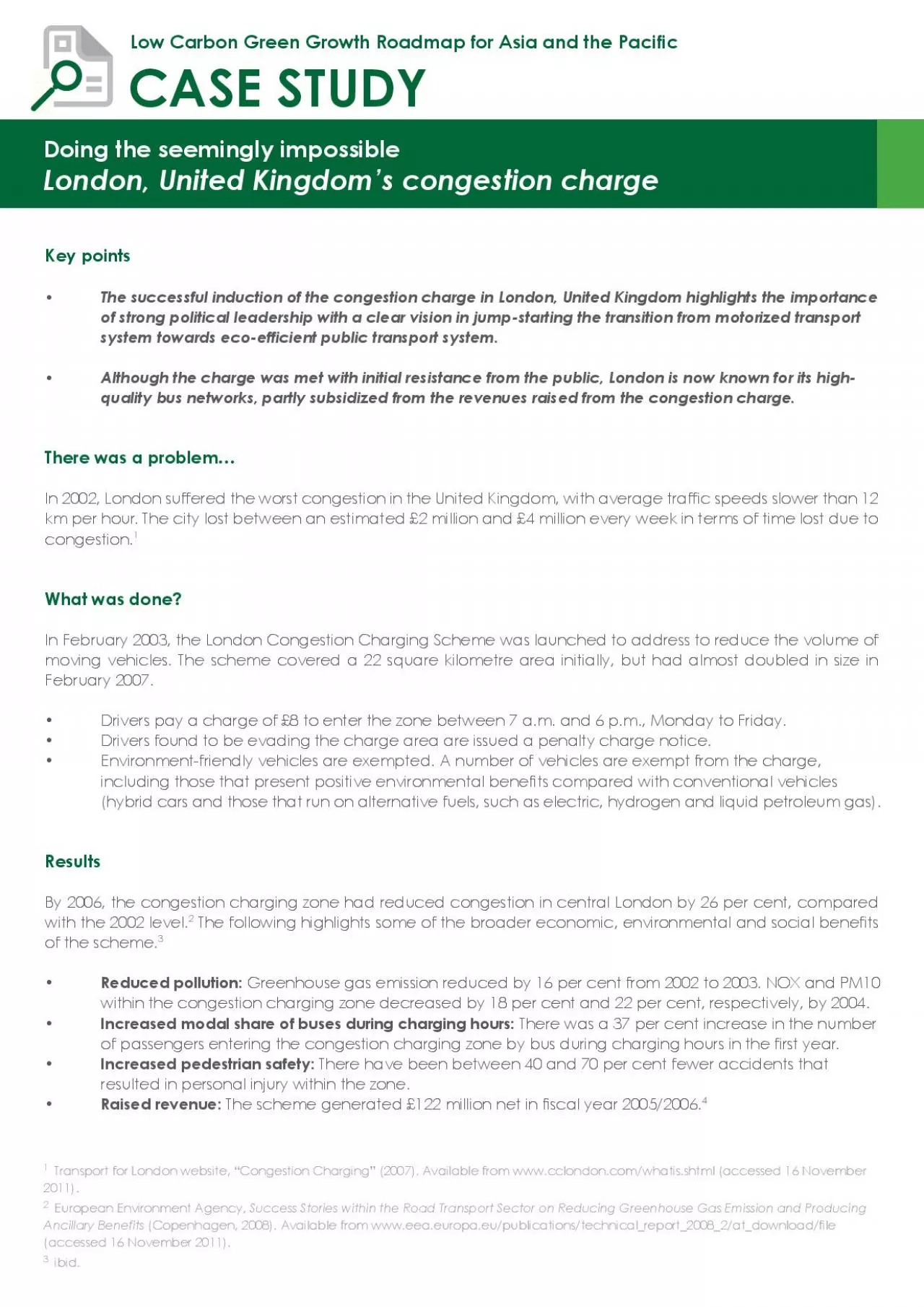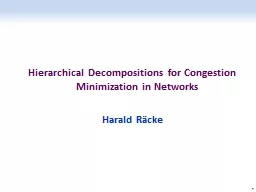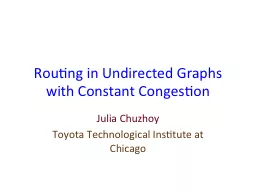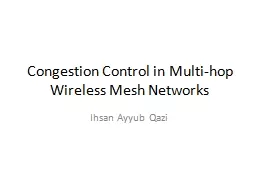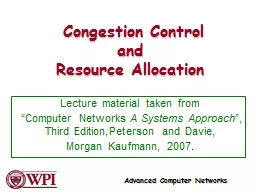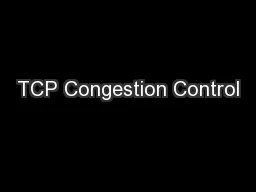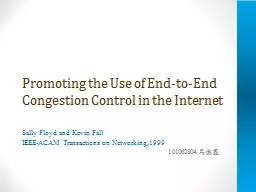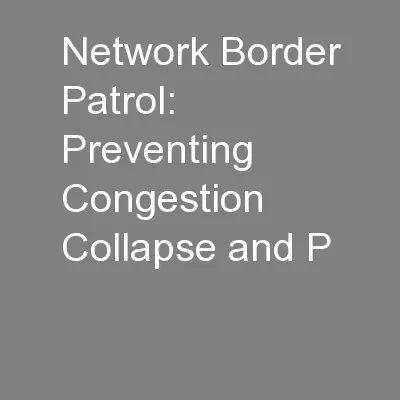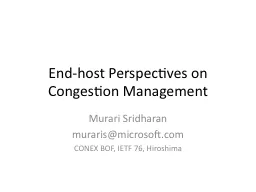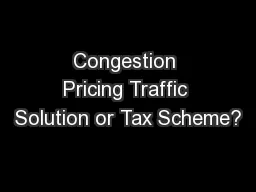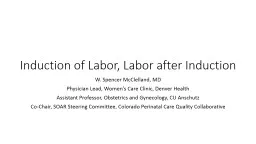PDF-The successful induction of the congestion charge in London Unite
Author : bery | Published Date : 2022-08-24
the scheme is estimated to save 25 million per year as a result ofa reduction in vehicle kilometres travelled fuel consumption and Transport for London website
Presentation Embed Code
Download Presentation
Download Presentation The PPT/PDF document "The successful induction of the congesti..." is the property of its rightful owner. Permission is granted to download and print the materials on this website for personal, non-commercial use only, and to display it on your personal computer provided you do not modify the materials and that you retain all copyright notices contained in the materials. By downloading content from our website, you accept the terms of this agreement.
The successful induction of the congestion charge in London Unite: Transcript
Download Rules Of Document
"The successful induction of the congestion charge in London Unite"The content belongs to its owner. You may download and print it for personal use, without modification, and keep all copyright notices. By downloading, you agree to these terms.
Related Documents

